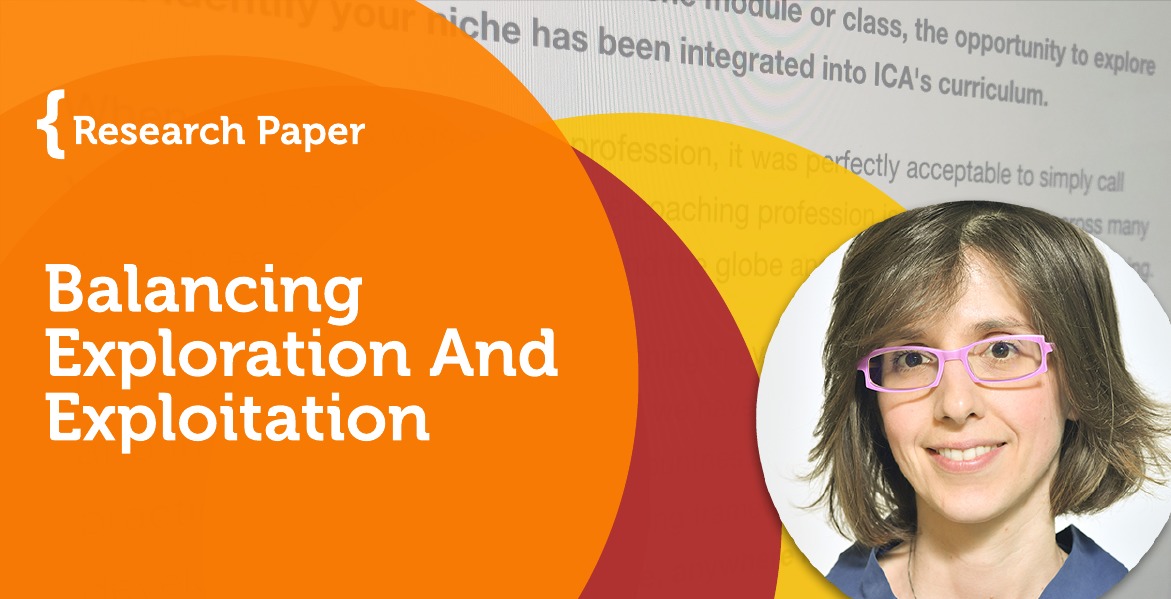
(Business Coach, ITALY)
How Individual Ambidexterity can be an Asset for Coaching
Commonly speaking, being ambidextrous refers to the ability to use both the right and left hand equally well, being the two sides of the brain pretty much symmetrical. This is a characteristic that naturally pertains to only about one percent of people. Moreover, several geniuses, such as Leonardo da Vinci, Albert Einstein, Benjamin Franklin, were ambidextrous. All this suggests that being ambidextrous is far from being immediate and easy to do.
The same is valid when it comes to ambidexterity in the management domain. In management research, ambidexterity was coined to explain an organization’s ability to combine exploration and exploration, being able to innovate with a long-term orientation and to leverage on existing capabilities and resources to match short term business needs (O’Reilly & Tushman, 2013). Hewlett-Packard, Johnson & Johnson, ABB, or Amazon are among the examples of successful ambidextrous organizations because of their business models. Organizational ambidexterity is important because it is recognized as an important antecedent of organizational innovation and performance (O’Reilly & Tushman, 2013).
While ambidexterity is a well-studied concept, both theoretically and empirically, at the organizational level (see O’Reilly & Tushman, 2013 for a review of the past 15 years of research), it is not at the individual level. Yet recent studies suggest that similar to what happens for organizational ambidexterity, individual ambidexterity is also a driver of better individual performance.
Following, we first review the meaning of individual ambidexterity and its importance. A discussion about the paradoxical relationship between exploration and exploitation can be found in the power tool. Secondly, we reflect on the link between individual ambidexterity and coaching, suggesting that coaching should train this ability as much as possible for better results. How to do it during a coaching session or a coaching journey is explained in the coaching model.
Individual Ambidexterity
Individual ambidexterity is the combination of individual exploration and exploitation, divergent thinking, focused attention, and cognitive flexibility (intended as the ability to switch between exploration and exploitation) (Good and Michel, 2013).
The combination is important because choosing between one or another is not leading anywhere. Individuals, that have a predominant, when not exclusive, focus on exploration, keep on experimenting, trying out different things, being caught in the so-called “novelty trap” because their always new ideas can often fail to be realized. Why? If we always try new things, we never capitalize on the results of this experimentation. At the same time individuals that have a predominant focus on exploitation risk the “routine trap”, being stuck in the past and routine behaviors. These behaviors are often efficient and comfortable for the individual, but sometimes they are also the ones the person wants to change with the support of coaching. It is true that these individuals, who exploit what they are already good at, are proficient and quicker in putting things into action, but lack the willingness and flexibility to change their behaviors.
Research suggests that individuals need to engage in high levels of both exploration and exploitation to successfully generate and implement ideas (Rosing, et al., 2011).
Individual Ambidexterity and Coaching
Being coaching a “partnering with clients in a thought-provoking and creative process that inspires them to maximize their personal and professional potential” (ICF), individual ambidexterity can be a valuable asset in the process, because it asks the client to leverage on his/her own existing capabilities, resources, and experiences, while at the same time being creative and forward-looking.
In coaching, we believe that the client – like anyone else – has a unique combination of strengths, knowledge, and skills that can be used to successfully achieve goals and interact with others. Being aware of them and willing to “exploit” them is key.
At the same time coaching is future-oriented, is about moving forward and making changes to get results. This requires being open to “explore”, reframing situations, and empowering new perspectives about them. Clients often hire us to be encouraged to act and to behold accountable for it.
Some clients may come to coaching being ambidextrous already, conscious about their assets, and how they could use them even in other domains but also willing to experiment with something new. However, given the fact that ambidexterity is not so diffused, the majority of clients will need support to either exploit or explore or to understand how to divide their energy to do both.
References
Good D. and Michel E.(2013) Individual Ambidexterity: Exploring and Exploiting in Dynamic Contexts, The Journal of Psychology.
Charles O’Reilly & Michael L. Tushman, (2013) Organizational Ambidexterity: Past, Present, and Future, Academy of Management Perspectives.